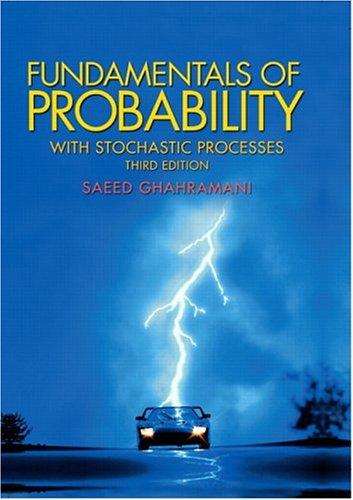17. Let X and Y be nonnegative random variables with an arbitrary joint probability distribution function. Let
Question:
17. Let X and Y be nonnegative random variables with an arbitrary joint probability distribution function. Let I (x, y) = B 1 if X > x, Y > y 0 otherwise.
(a) Show that E ∞ 0 E ∞ 0 I (x, y) dx dy = XY.
(b) By calculating expected values of both sides of part (a), prove that E(XY ) = E ∞ 0 E ∞ 0 P (X > x, Y > y) dx dy. Note that this is a generalization of the result explained in Remark 6.4.
Fantastic news! We've Found the answer you've been seeking!
Step by Step Answer:
Related Book For 

Fundamentals Of Probability With Stochastic Processes
ISBN: 9780131453401
3rd Edition
Authors: Saeed Ghahramani
Question Posted:






